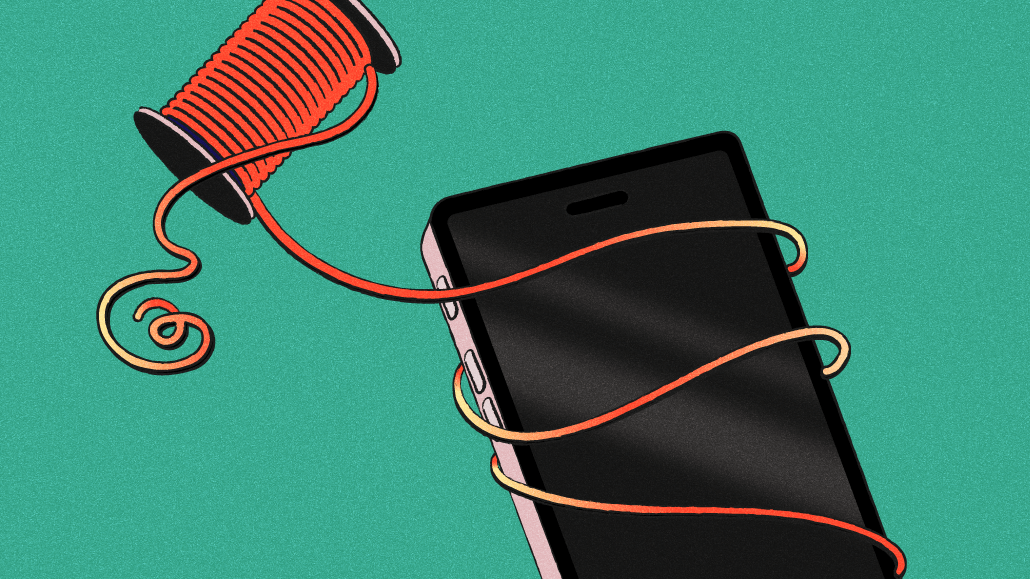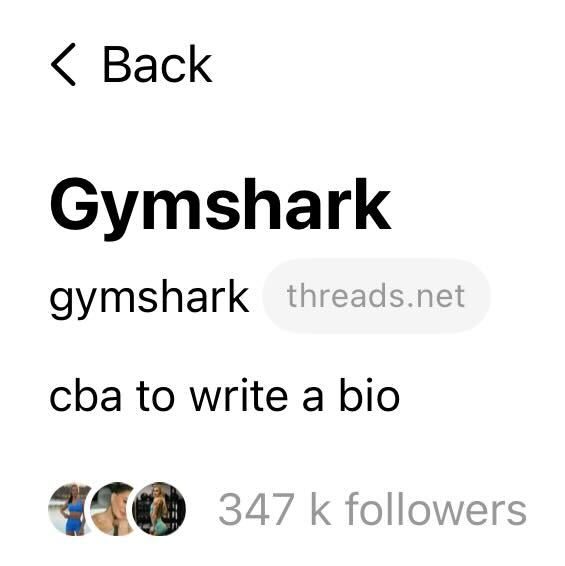Meta’s Threads still has users one month on, but it doesn’t have a real vibe yet

It’s been exactly a month since Meta’s text-based app Threads launched and brands are still finding their feet with the platform.
But not having a solid social strategy in place for Threads right now in these early days isn’t something to worry about. Strategies usually come when platform cultures are more established. When people (and therein brands) know what it stands for and how to use it.

Over the past four weeks, brands have typically landed in one of two buckets on Threads. Some brands have adopted a more tongue-in-cheek approach, dubbed the “unhinged social media manager” to the platform. Gymshark, for example, has a Threads bio that reads “cba [can’t be arsed] to write a bio” and its posts read as though the brand’s account is talking directly to its followers.
The other bucket is for those brands that probably don’t want FOMO — and there are perks to being an early adopter to a new platform if it takes off. These brands have likely added Threads to their social media mix, may or may not post frequently, and have replicated whatever messaging they used on Twitter (now X), on Threads. Like publishers, for example. Generally, their posts are similar across Twitter and Threads, because they’re designed to drive traffic to articles on their websites.

“It will take time for people [marketers] to decide what their strategy is going to be on Threads,” said Danielle Carter, paid social account director at digital marketing agency Croud. “There’s no right or wrong at the moment, marketers are just finding their feet.”
But as Carolyn Garavente, associate director of paid social at media agency Brainlabs, noted that while brands were reactive when Threads first launched, ongoing reactive strategies aren’t sustainable long-term.
“With the cooling of the platform comes a golden window to put together a long-term, more sustainable strategy for brands,” she explained. “It also gives them a chance to see what updates Threads will roll out and if that will impact what their strategies will be.”
And this isn’t a decision marketers alone are struggling with. Even users are still undecided about which persona to bring to the brand new text-based app.
“People are questioning if they should bring their Twitter-self to the platform, or their Instagram-self? Or maybe bring a bit of both, and show up as your Twinstagram self,” added Amy Gilbert, vp of social innovation at The Social Element.
Threads’ overlords themselves are still figuring out what the social network is and what it means to people. As Gilbert highlighted, it’s not a place that has its own jokes yet, let alone culture. And that culture will no doubt improve as more functionality becomes available. After all, it’s rather difficult to find your feet on any new platform when you’re limited as to what you can do there.
But is the user drop off worrying (for brands) at this stage?
Threads sharp ascent has been just as abrupt as its reality check. Sure, the platform is the fastest growing platform in history, but one month on, most of those users are no longer as active as they were.
Put into perspective, data from Similarweb, (which tracks social media platform usage on Android devices rather than Apple iPhone devices, due to Apple’s App Tracking Transparency, or ATT) showed that July 7, two days after the app launched, daily active users globally for Android devices peaked at around 49.3 million. By July 29, these users had decreased by around 78% to about 11.1 million.
Gilbert isn’t surprised by the fall in DAUs because in her view, the rate of initial growth was so rapid, expecting that same level of users to be retained this early on simply isn’t realistic.
She echoed Meta’s CEO Mark Zuckerberg, who indicated he knew this was the case.
“Early growth was off the charts, but more importantly 10s of millions of people now come back daily. That’s way ahead of what we expected,” Zuckerberg posted on Threads two weeks ago. “The focus for the rest of the year is improving the basics and retention. It’ll take time to stabilize, but once we nail that then we’ll focus on growing the community. We’ve run this playbook many times (FB, IG, Stories, Reels, etc) and I’m confident Threads is on a good path too.”
And he’s right. This isn’t Meta’s first rodeo. The tech giant knows what works and knows how to make money.
“People forget that when platforms launch, they’re made for users first, not brands,” Gilbert added. “I think because Threads came from Meta, they’re already so used to being able to advertise and target audiences from the jump. But that’s just going to take a bit more time.”
Meta did not respond to Digiday’s request for comment.
More in Marketing

Zero-click search is changing how small brands show up online — and spend
To appease the AI powers that be, brands are prioritizing things like blogs, brand content and landing pages.

More creators, less money: Creator economy expansion leaves mid-tier creators behind
As brands get pickier and budgets tighten, mid-tier creators are finding fewer deals in the booming influencer economy.

‘Still not a top tier ad platform’: Advertisers on Linda Yaccarino’s departure as CEO of X
Linda Yaccarino — the CEO who was never really in charge.







